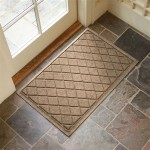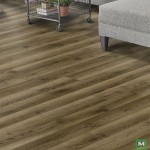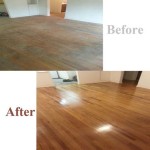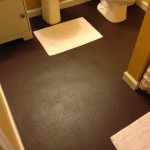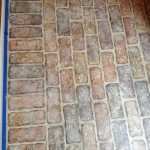Staining Oak Hardwood Floors Grey: A Comprehensive Guide
Grey hardwood floors have surged in popularity, offering a modern and sophisticated aesthetic to homes. Oak, with its prominent grain pattern and durability, is a frequently chosen wood species for this transformation. Achieving the desired grey tone on oak hardwood floors, however, requires careful planning and execution. This article provides a detailed guide to the process, covering preparation, staining techniques, and essential considerations.
Understanding Oak and its Characteristics for Staining
Oak is a hardwood recognized for its strength, durability, and distinctive grain patterns. There are two primary types of oak used in flooring: red oak and white oak. Red oak has a pinkish undertone and a more open grain structure, which readily absorbs stain. White oak, conversely, has a more neutral tan color and a tighter grain, making it slightly less absorbent than red oak. This difference in absorbency influences the final color achieved with the stain. When selecting a grey stain, it is essential to consider the underlying color of the oak to anticipate how it will interact with the stain. For example, the pinkish hue of red oak might subtly influence the grey, resulting in a warmer grey tone compared to the cooler grey achievable on white oak.
Furthermore, the open grain structure of oak necessitates proper filling to achieve a smooth, even finish, especially when aiming for a modern, sleek grey look. Filling the grain prevents the stain from settling unevenly within the deeper pores, creating a blotchy or inconsistent color. The age of the oak flooring also plays a role. Older oak floors may have absorbed previous finishes or oils, requiring more extensive sanding to ensure the new stain adheres properly.
Preparation is Paramount: Essential Steps Before Staining
Successful staining hinges on thorough preparation. The initial step is removing all furniture and fixtures from the room. Protect adjacent areas, such as walls and trim, with painter's tape and drop cloths. The room should be well-ventilated to dissipate fumes from sanding and staining materials. Safety is paramount; wear appropriate personal protective equipment, including a dust mask, safety glasses, and gloves, throughout the process.
Sanding is the most crucial stage of preparation. Start with a coarse grit sandpaper (e.g., 36- or 40-grit) to remove the existing finish, imperfections, and any previous stain. Progress through progressively finer grits (e.g., 60-grit, 80-grit, and finally 100- or 120-grit) to achieve a smooth, even surface. A drum sander is typically used for the main floor area, while an edge sander is necessary for reaching along walls and in corners. Pay close attention to achieving a consistent sanding pattern to avoid leaving swirl marks or uneven areas. Vacuum thoroughly after each sanding pass to remove dust. Any residual dust can interfere with stain penetration and adhesion.
After sanding, inspect the floor for imperfections such as nail holes, cracks, or gaps. Fill these with wood filler that is compatible with the stain. Allow the wood filler to dry completely according to the manufacturer's instructions, and then sand it smooth and flush with the surrounding wood surface. Finally, perform a final vacuuming and tack cloth wipe-down to remove any remaining dust particles. A clean, smooth, and dust-free surface is essential for consistent stain application and optimal results.
Selecting the Right Grey Stain and Application Techniques
Choosing the correct grey stain is critical to achieving the desired aesthetic. Grey stains come in a wide range of shades, from light and subtle greys to darker, more dramatic charcoals. Consider the existing décor, lighting conditions, and personal preferences when making a selection. It is advisable to test the stain on an inconspicuous area of the floor or on a sample piece of oak to assess the color and how it interacts with the wood grain. Also, consider whether the stain is oil-based or water-based.
Oil-based stains generally penetrate deeper into the wood, providing a richer color and greater durability. They also tend to enhance the wood grain. However, oil-based stains require mineral spirits for cleanup and emit stronger odors. Water-based stains are lower in VOCs (volatile organic compounds), making them a more environmentally friendly option. They also dry faster and are easier to clean up. However, they may not penetrate as deeply as oil-based stains, potentially resulting in a less intense color. In regard to grain filling, paste wood fillers can be tinted to closely match the desired grey stain color, enhancing the overall uniformity of the finished surface.
Before applying the stain to the entire floor, perform a test patch in an area that is usually hidden, such as under a rug or in a closet. This allows you to assess the color and application technique without risking the entire floor. Once satisfied with the test patch, apply the stain evenly using a brush, rag, or applicator pad. Work in small sections, following the direction of the wood grain. Avoid applying too much stain at once, as this can lead to uneven color and blotching. Allow the stain to sit for the recommended amount of time specified by the manufacturer, typically a few minutes. Then, use a clean rag to wipe off the excess stain. The longer the stain sits, the darker the color will be. Wiping off the excess is critical to achieving a consistent, even tone. If a darker shade is desired, a second coat of stain can be applied after the first coat has dried completely. However, sanding lightly between coats is generally not recommended, as it can remove too much of the initial stain layer.
Once the stain has dried completely, apply a protective topcoat of polyurethane or another floor finish. A water-based polyurethane is often preferred for grey floors, as it won't yellow over time, preserving the true grey color. Apply multiple coats of finish, allowing each coat to dry thoroughly before applying the next. Lightly sand between coats with a fine-grit sandpaper (e.g., 220-grit) to ensure a smooth, even surface. Follow the manufacturer’s instructions for drying times and application methods.
Addressing Potential Challenges and Common Mistakes
Staining oak hardwood floors presents several potential challenges that can impact the final result. One common issue is blotchiness, which can occur if the stain is absorbed unevenly. This is especially prevalent in oak due to its open grain structure. To minimize blotchiness, use a wood conditioner or pre-stain wood treatment before applying the stain. These products help to seal the wood pores, promoting more even stain absorption.
Another challenge is achieving the desired grey tone. The underlying color of the oak, as well as the type of stain used, can influence the final result. Red oak, with its pinkish undertones, may require a stain with blue or green undertones to neutralize the warmth and achieve a true grey color. Experimenting with different stain colors and application techniques on a test patch is crucial to finding the right combination. It is also important to consider the lighting in the room. Natural light can reveal subtle variations in color that may not be apparent under artificial light.
Furthermore, improper sanding can lead to uneven stain absorption and an unsatisfactory finish. Ensure that the floor is sanded uniformly, with no swirl marks or inconsistencies. Feather the edges of sanded areas to blend them seamlessly. Thoroughly remove all dust before applying the stain. Leaving dust on the floor can create a textured surface and interfere with stain adhesion.
Finally, applying too much stain or not properly wiping off the excess can result in a muddy or uneven finish. Apply the stain in thin, even coats and wipe off the excess promptly. Avoid letting the stain pool in corners or along edges. Use a clean rag to remove any drips or splatters immediately. Patience and attention to detail are essential for achieving a beautiful, professional-looking grey finish on oak hardwood floors.

Gray Hardwood Flooring Stain Colors

Staining Hardwood Floors Gray Refinish Wood With Westchester

Grey Cerused White Oak Floor Rubio Monocoat

Custom Colored Hardwood Floors

From Gardners 2 Bergers Blogger S Driftwood Gray Hardwood Floors Trulli Homes In Alberbello

Light Oaking Reactive Wood Stain Gallon

Staining A Hardwood Floor With Vinegar And Steel Wool

Grey Cerused White Oak Floor Rubio Monocoat

What Color Should I Stain My Wood Floors

Classic Gray Stain Grew On Me Looks Great With Loba Satin Finish
Related Posts

